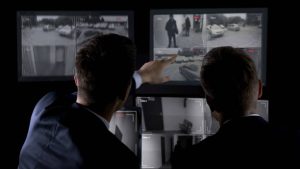Dealing with Layers: Inside Audio and Video Forensics
Now let us establish the scene: You gaze at a grainy security camera, speculating about what shadows could be hiding. Alternatively you hope there is a confession buried between the lines by listening to a voicemail tinged with background noise. Extraction of the truth from scraps is not just a task but also a relentless preoccupation in the field of Digital Evidence.

Utilize audio analysis. Imagine picture searching through a phone tape filled with overlapping voices, distant alarms, stationary background tickling. You believe that within that clutter there is something crucial concealed—a detail, a warning, a confession muttered just low enough to be slippery. Analyzers turn the sound like they are rotating an antique radio dial. Hints start to show a little notch here, a small frequency change there. This is not, however, a guessing game. Specialized programs dissecting frequencies like surgeons wielding scalpels separates speech from noise.
Regarding video, the difficulty changes but does not go away. Here is a grainy parking lot clip. Faces are scattered like a Monet painting, forms swim under humming streetlights. That was a hand-off rather than a handshake. Is that the automobile of the suspect, or merely a minivan with a taillight busted? Although they cannot create miracles, forensic professionals can sharpen, clarify, improve—always be careful not to stray into manipulation. More than Hollywood-level clarity, authenticity and trackability count.
Sometimes the actual hint isn’t what first strikes you. This is the almost missed split-second difference. Perhaps a video chronology skips or an interview exhibits an unusual silence. Was anything removed? Has someone stopped the recording at a particularly fiery moment? Fair game is every frame and fraction of a second. These skips lit like neon in Vegas with the correct gear. Those who know where to look will find secrets whispered by bit rates, frame rates, compression artifacts.
Modern curveballs keep experts active late at night. Now fouling the waters are deepfakes and highly lifelike synthetic voices. You might be nodding along to a furious fight one moment; then, you might be wondering if those words were ever uttered by a live person. Are you able to find the phoniness? Perhaps if you notice how lips don’t exactly synchronize or how audio artifacts hum where none should be there. Though technology moves quickly, the brains designed to reveal it also move quickly.
Ever tried reading whispered words in a packed café? A hundred times that, put in a legal team, and welcome forensic transcription. Professionals apply spectral analysis, filtration, and a lot of tolerance. Every change—subtraction of noise, raising of muttered syllables—is recorded, expecting critical questions in court: “That enhancement—what did it actually change?”
Stories turned by one cleaned-up clip or isolated voice abound in courtrooms. Imagine a situation where a fuzzy license plate was just enough to corroborate an alibi or a distorted threat was coaxed out from mumbled phone static. Sometimes analysts combine several shaky clips to synchronize timeframes and expose errors in bogus narratives.
One of great value is doubt. Is a 15-second gap in police footage either intentional or technical blip? Was a “accidental” phone shut-off in line with the action? Forensic investigators live for questioning, “What aren’t we seeing? What is just outside the frame? They are ardent truth seekers rather than merely digital tinkerers.
Think twice the next time someone flashes “undeniable proof” from a camera or argues that “the tape says it all.” Like narrative, evidence calls for professional eyes and ears. Forensics pushes the ordinary—scratchy noises, hazy images, glitchy frames—until they sing, squeal, or leak secrets buried for far too long.
